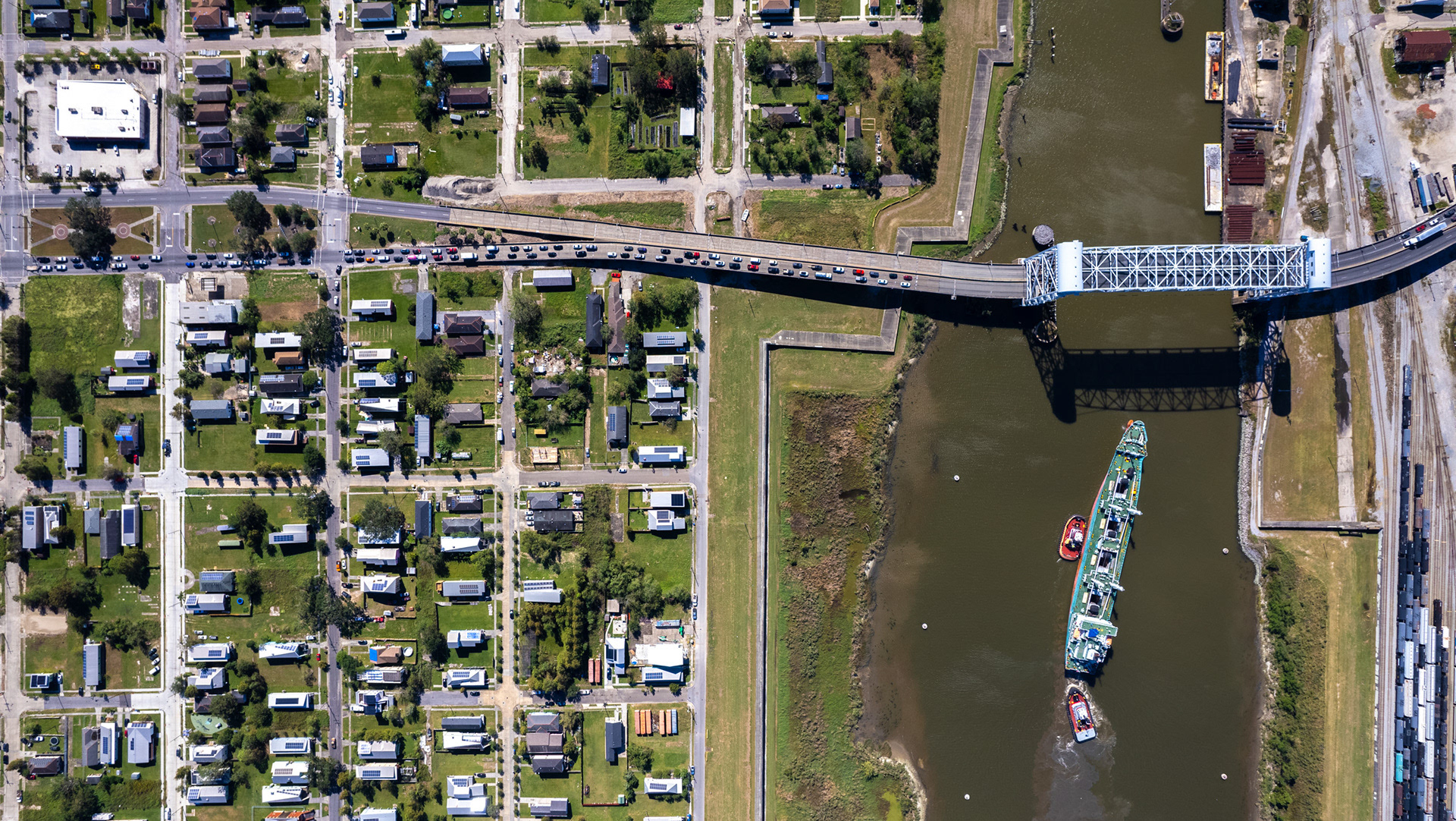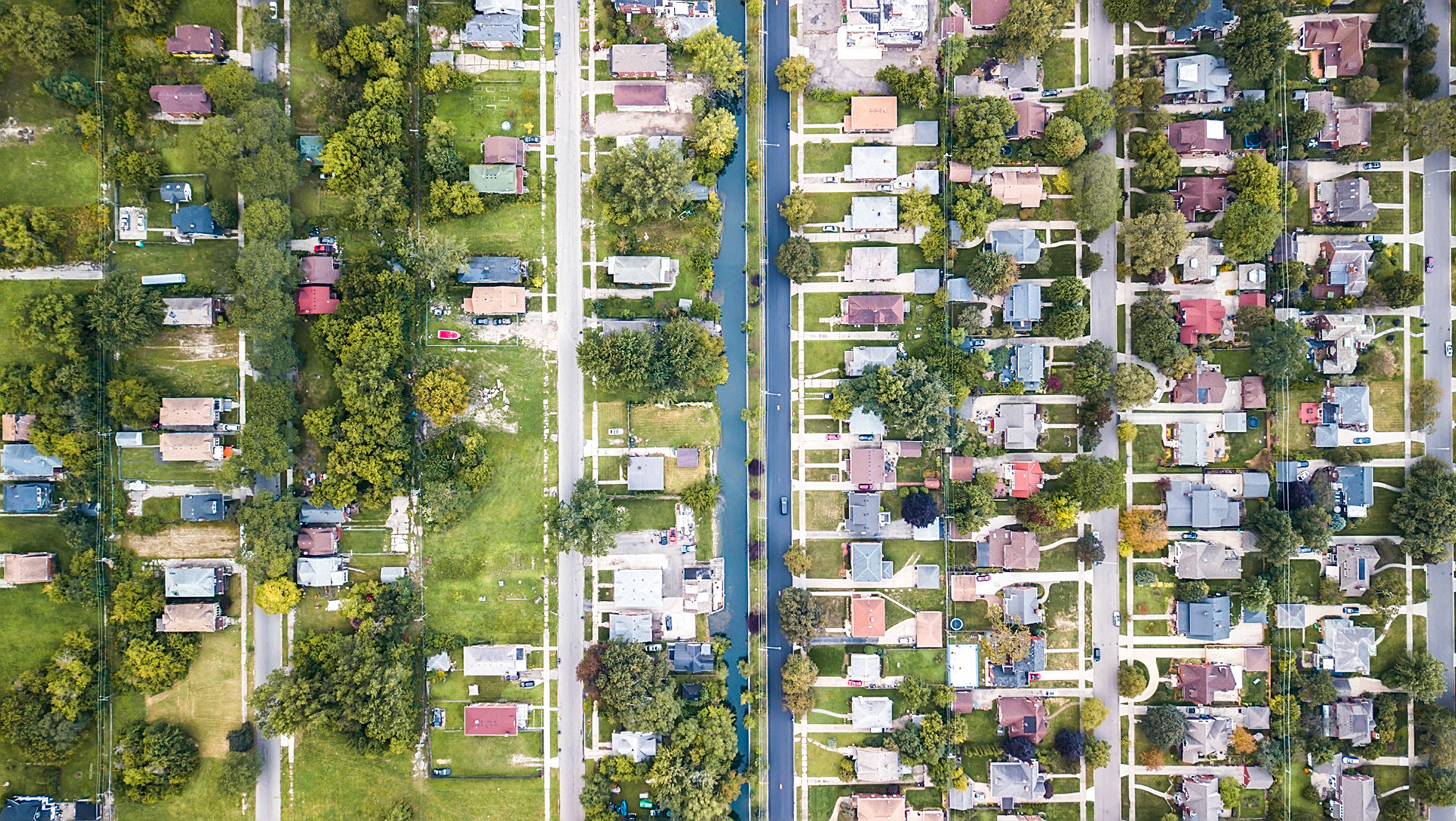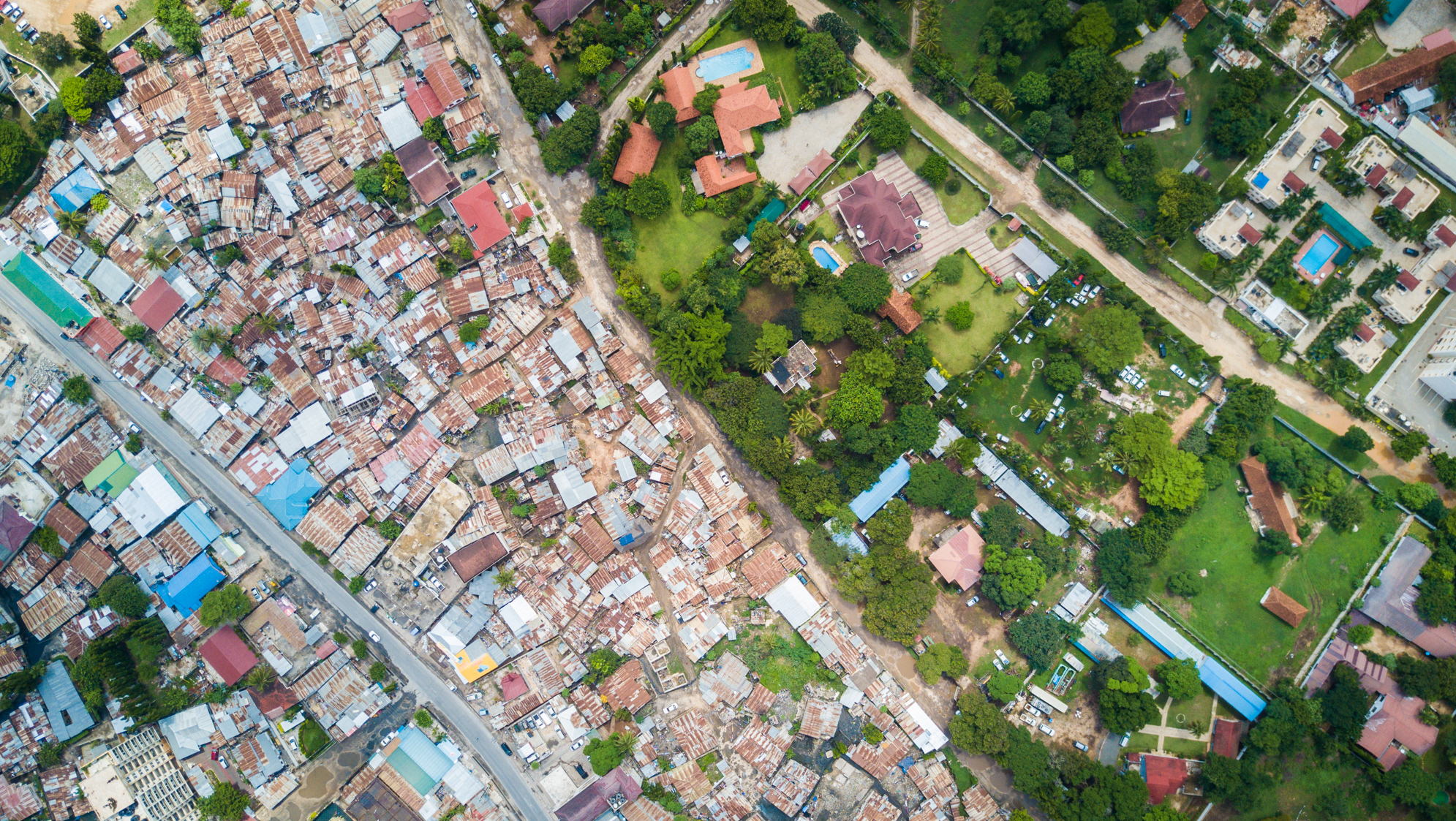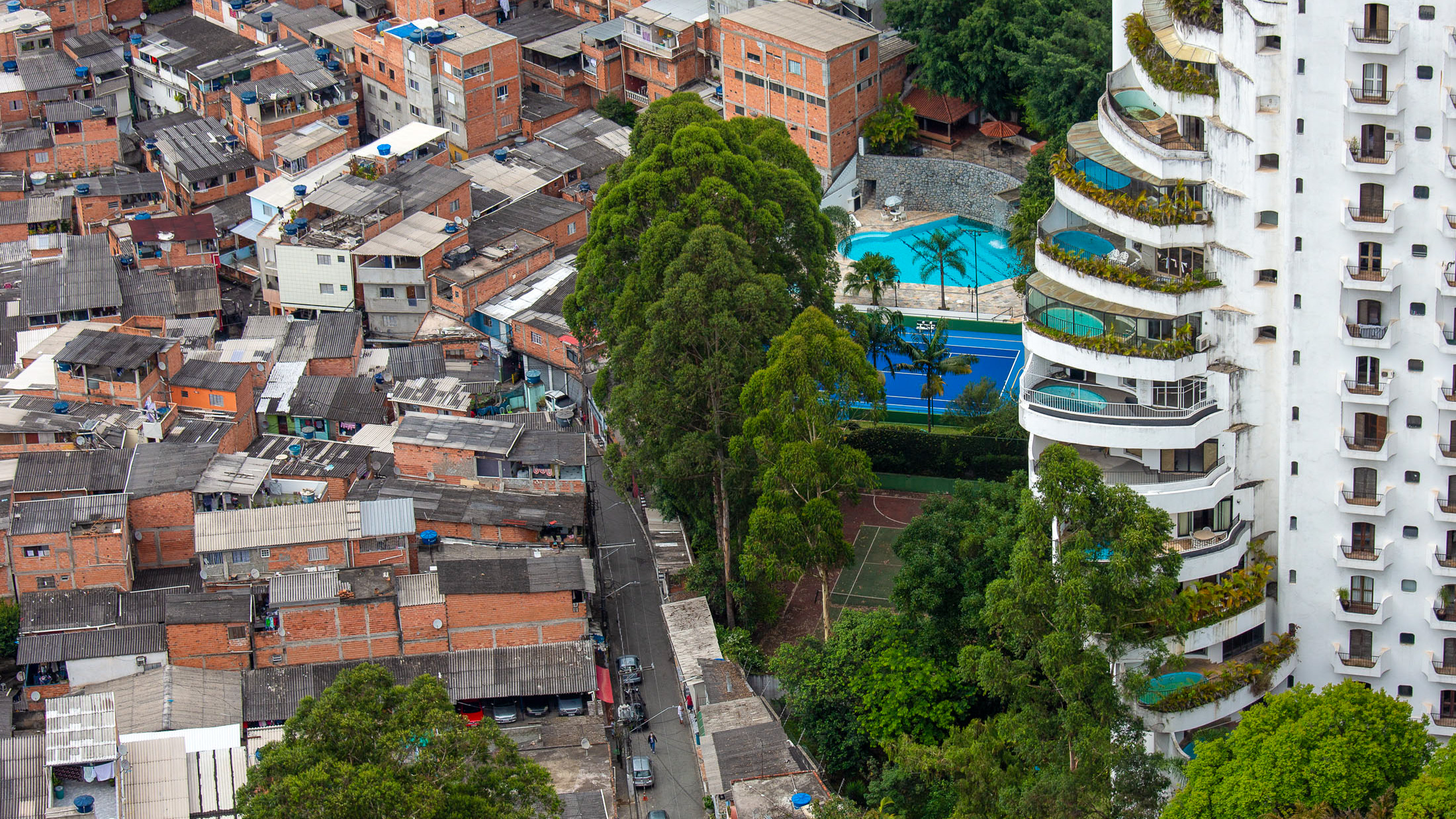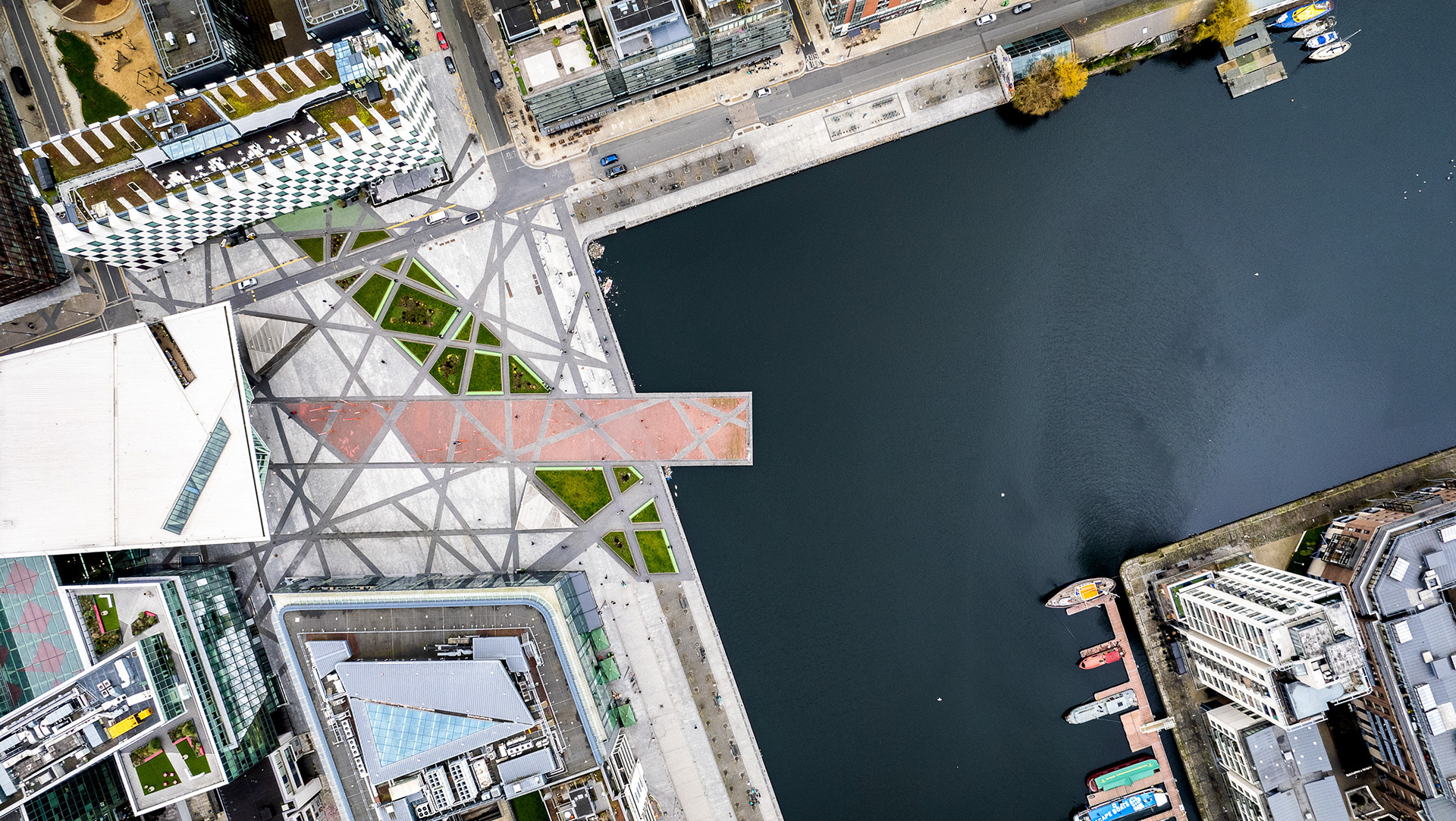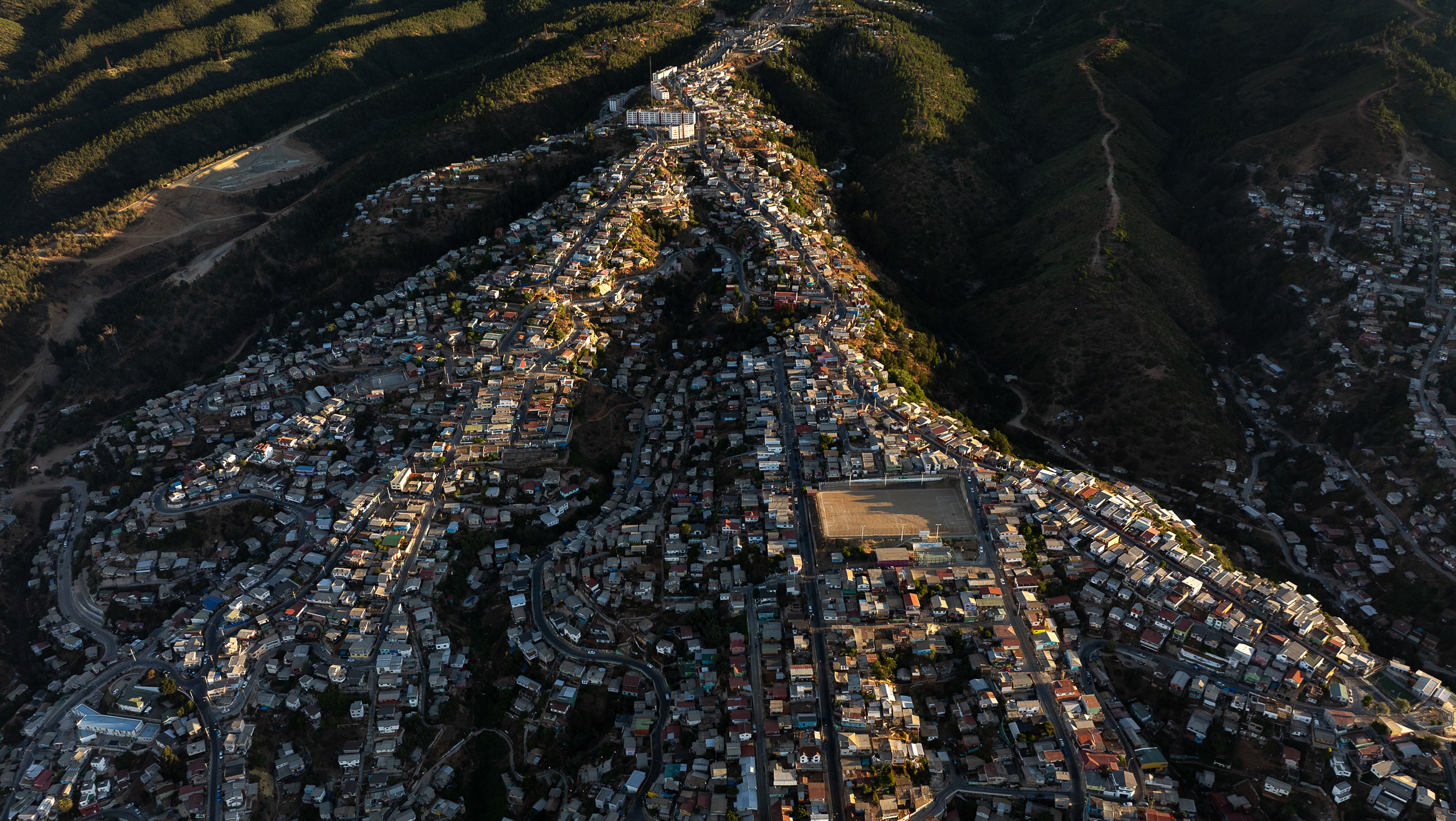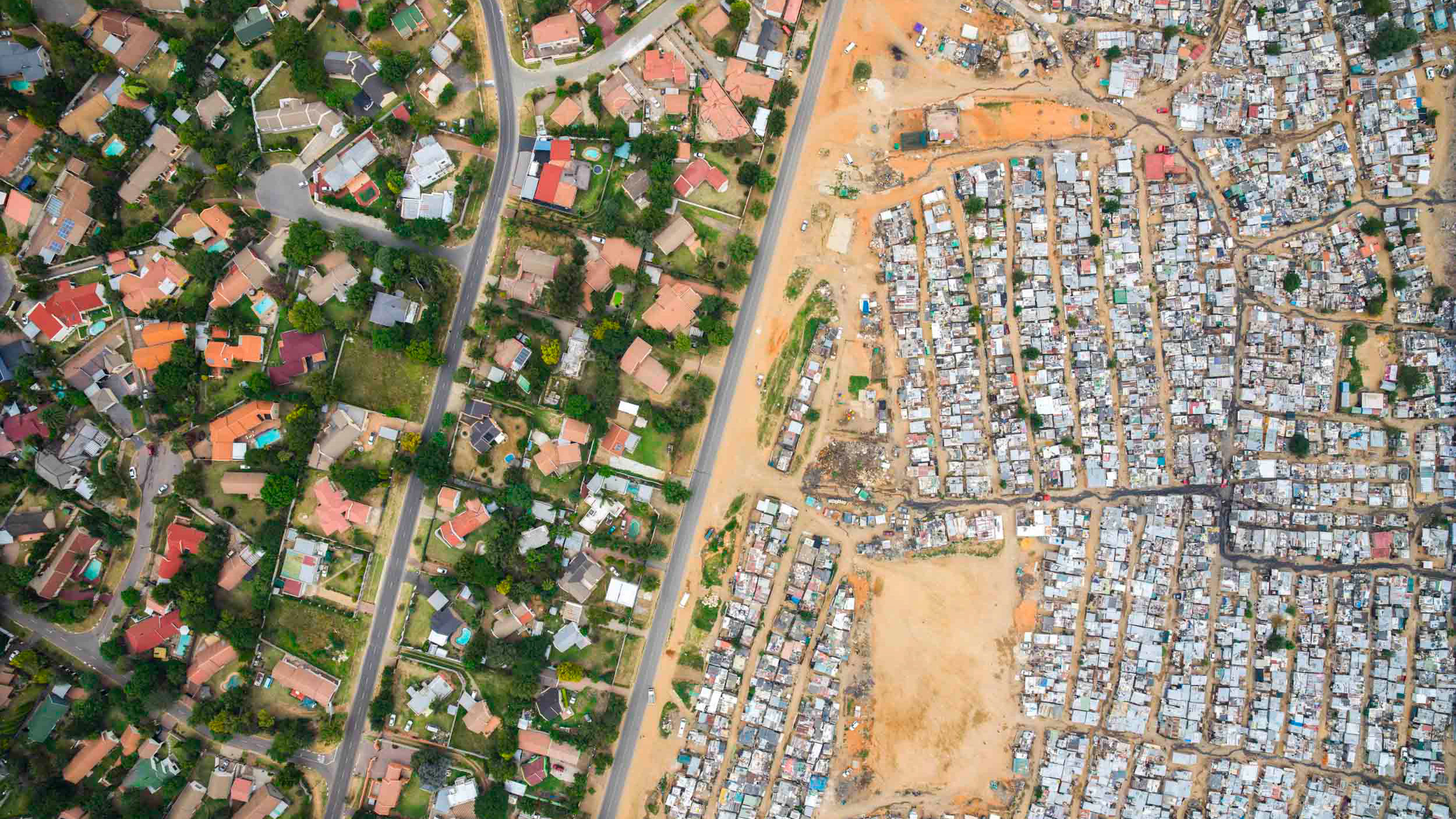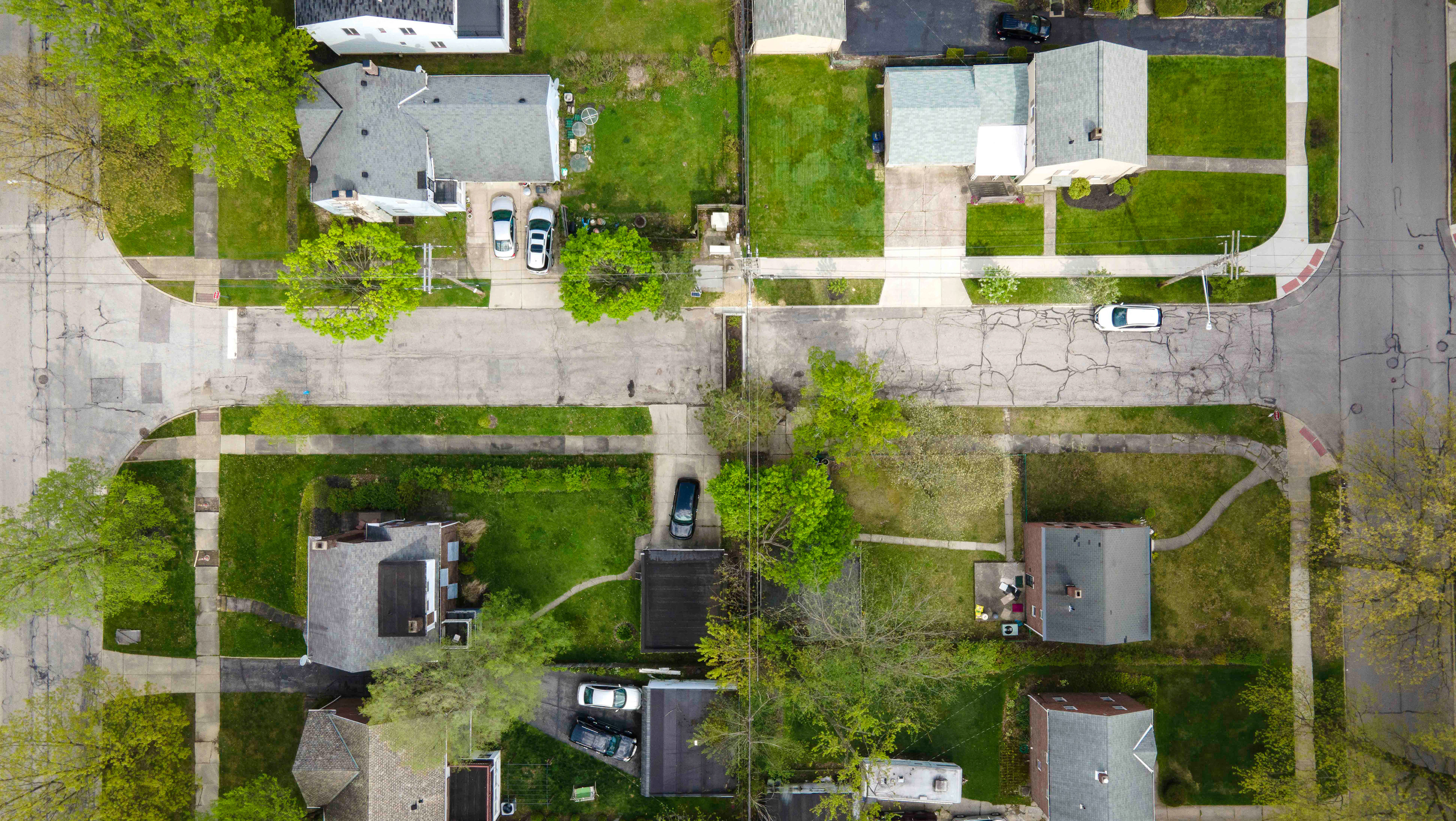The area surrounding the Bandra Kurla complex is a mixture of extreme wealth and extreme poverty, including the consulate generals of several countries, corporate headquarters, and the National Stock Exchange.
Inequality in Mumbai, India - where over 60% of the city population lives in slums.
The National Stock Exchange of India (visible on the right) sits across the road from a slum.
Dharavi, a city within a city, made famous by the movie "Slumdog Mllionaire", is almost entirely made of grey concrete.
Mumbai’s mangroves—once a natural boundary—now host corrugated rooftops and satellite dishes, home to some of the city's poorest.
Architect PK Das has received accolades for his work mapping and enumerating slum dwellers within the city of Mumbai. He estimates that 60% of Mumbai's population is made up of slum dwellers - an incredible 7.5 million people.
Dharavi Slum is one of the most famous slums in the world. The adjacent Mahim Nature Park was developed as a relief valve, an affordable way to escape the extreme urbanism which characterizes most Indian cities.
Dharavi Slum is one of the most famous slums in the world. The adjacent Mahim Nature Park was developed as a relief valve, an affordable way to escape the extreme urbanism which characterizes most Indian cities.
This river represents an extreme wealth gap in Mumbai. The building in the upper left of this photo is the Oil and Natural Gas Corporation LTD, which bills itself as "India's largest profit making company". On the right is the edge of Dharavi slum, once India's largest slum, and the setting for the film "Slumdog Millionaire".
This bridge will connect the Bandra Kurla complex to several transport links in Dharavi, on the opposite side of the Mithi River.
The exceedingly sharp contrast between single-story slums and developed areas in northern Mumbai.
Slum dwellers in Mumbai's northern sections use blue tarps to protect against the monsoon rains. The houses are packed so tightly together it's impossible to see the pathways between them from above.
Slums line a branch of the Mithi River near the National Stock Exchange.
Another view of the Mahim Nature Park, with the visitor's center visible as a open circular building on the left. The entrance to the park costs 10 rupees, "less than a cup of tea", and provides a shaded natural getaway to the chaos of Dharavi's urban canyons.

